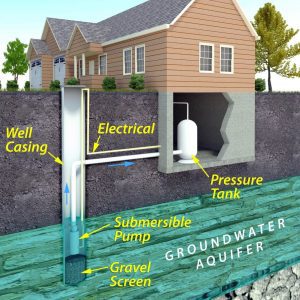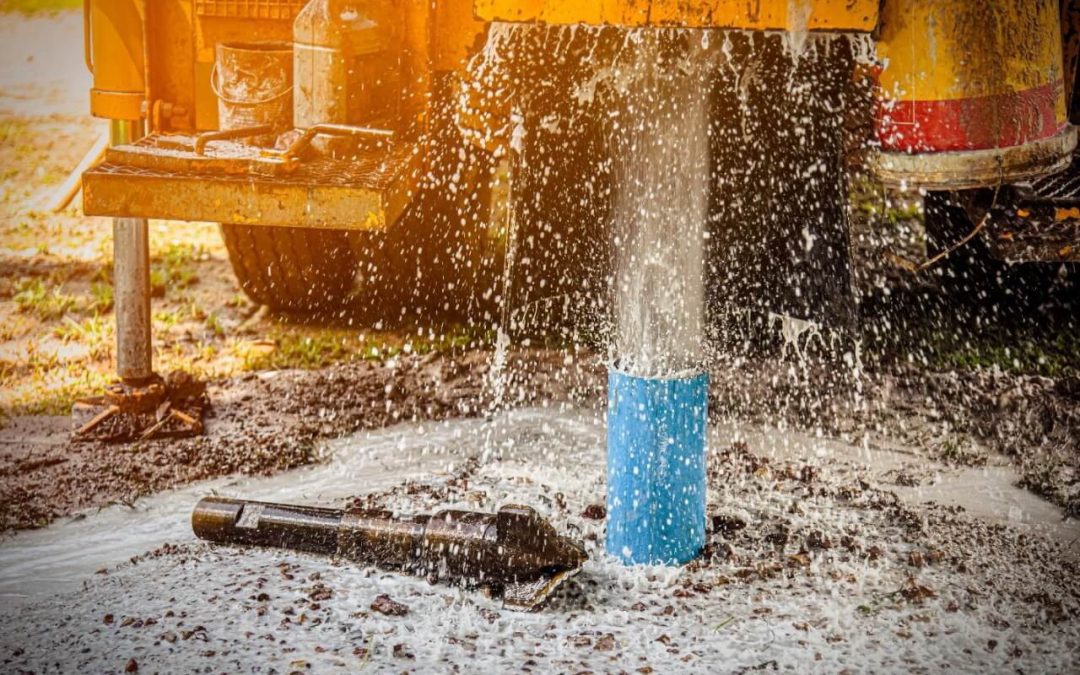Private water wells are often used in rural areas where towns are not connected to a public water line. When longtime city dwellers think of a well, they may think of the old-fashioned hand-crank wells seen in movies and TV shows, but modern wells are much more advanced than these older styles.
 The typical modern drilled well goes at least 100 feet down into the earth, sometimes reaching depths of 700 or 800 Feet. Drilled wells almost always have a 6-inch diameter steel casing, with an electronically driven submersible well pump near the bottom of the well.
The typical modern drilled well goes at least 100 feet down into the earth, sometimes reaching depths of 700 or 800 Feet. Drilled wells almost always have a 6-inch diameter steel casing, with an electronically driven submersible well pump near the bottom of the well.
These submersible pumps push water to the home, directly into what is known as a pressure tank, or expansion tank. The pressure tank has an inner bladder that is pressurized to push the water into the home fittings, such as faucets, showers, and outside spigots. Homeowners with wells often have their water tested for any contaminants before determining if their water is potable. If contaminants are found in well water, an array of filters may be installed depending on the needs of that particular well. The most common types of filters are water softeners to mitigate water hardness, and sediment filters to filter out large physical contaminants coming from the well, such as sand and iron particulates.

